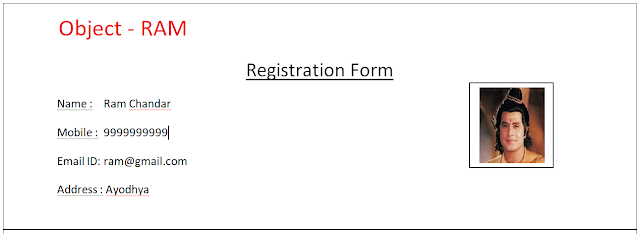Class and Object: Spaciman blank form is class and filled form by taking its photocopy by multiple students is object
Inheritance: You can use your mobile and your father's mobile also but your father can not use your mobile.
your fathers property is yours , but your property is not your fathers
Method OverRiding: Parent and Child class having the function with the same name.
Parent-Child relationship + Riding
Method OverLoading :
Example 1 : You and your son are going to start dinner. You asked for spoon. Knowing that you want to serve rice from kadhai to plate son will give you a big spoon. if you are going to start eating from your plate he will give you small spoon.
Example 2 : In the same class there are draw( a,b) , draw(a,b,c) , draw( a,b,c,d) . First funcion will draw a line, second will draw a triangle and the third will draw a rectangle.
static block: is like a bulb inside the fridge which gets switched ON automatically just before you open the fridge door. When the class is loaded static block gets executed at first
Encapsulation: public setter and getter methods and private variables in one capsule
Constructor: Whenever the doorbell rings, the door gets opened by the house owner. Whenever an object is created constructor gets executed.
// Class name: Student
public class Student{
// Constructor has always the same name as the class
public Student() {
System.out.println("Constructor is called!");
}
public static void main(String[] args) {
// Creating an object, which will invoke the constructor
Student obj = new Student();
}
}

List<Integer> rollNumbers = List.of(101, 109, 125, 107);
above code should be read as
List of Integer called rollNumbers. here
< can be spoken as of
> can be spoken as called
public static void main(String[] args) {
int[] arr = {1, 2, 3, 4, 5};
System.out.println(arr.length);
for( int i= 0; i <arr.length; i++)
{
System.out.print (arr[i]);
}
}
How to say this : (Collection::stream)
Answer: Turn all these collections of lists into a single stream of individual elements











No comments:
Post a Comment